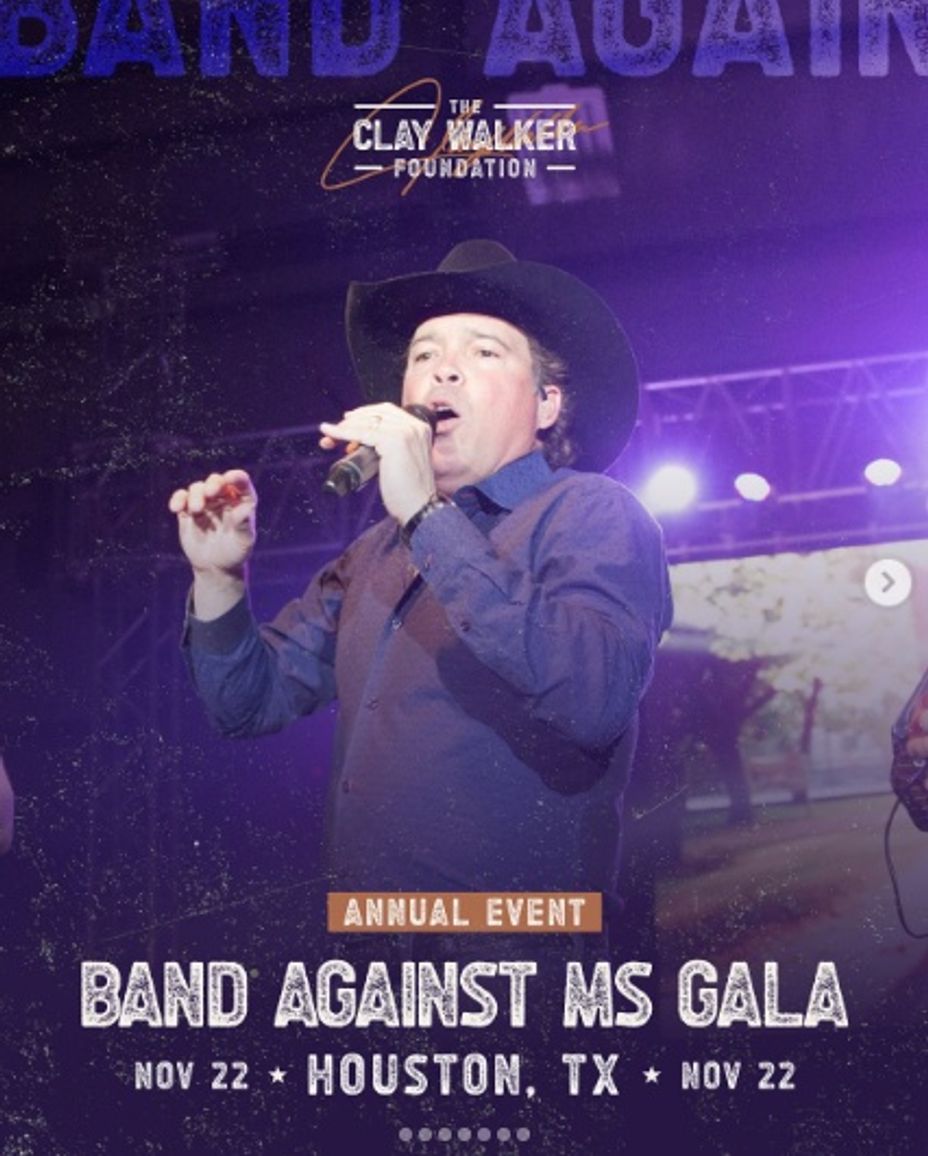To help control chronic symptoms from MS, country music star Clay Walker feels improvement after receiving a small muscle-relaxant implant in March.
“The surgery gave me a lot of hope,” said the 56-year-old singer of "Live Until I Die" and other hits. “Am I walking perfect? No. Am I walking better? Absolutely."
After 30 years of living with MS, Walker said that the disease was starting to progress and affect his day-to-day life. Due to MS, Walker experiences spasticity, a chronic tightness in the muscles that often results in good fatigue, pain and mobility problems. MS causes different symptoms in every patient but spasticity is a common one.
“At the beginning of the year, I noticed I was having a lot of difficulty with balance and walking, and it really started to worry me,” Walker said. “I knew I had to do something.”
In a procedure that has been around for decades, the surgery implants a hockey-puck-sized baclofen pump that periodically releases muscle-relaxant medicine to help with muscle spasms and tension. The pump is set to individual, very personalized doses and schedules to release baclofen into the system throughout the day and night, as needed. Baclofen is most often taken orally in tablets, but when that is ineffective, the pump is a great alternative to get hold of out-of-control pain and spasticity tightness. While the baclofen tablets often contain 10 mg or so, the pump feeds baclofen directly into the spinal fluid and requires only very small but powerful doses.
For Walker, the results speak for themselves. "I got on a treadmill the other day without a harness holding me up to keep from falling, and I walked for five minutes," he said. "That is progress."
He acknowledges that he still has issues with balance, but he's working through with the resolve of someone who has managed remaining relapsing MS since 1996. His Clay Walker Foundation throws a huge benefit in Houston every year, helping those with MS afford the services they need.
Source: "Why This County Star Feels ‘Blessed’ as He Battles Multiple Sclerosis" by Gavin Boyle, Movieguide.com.
#PainManagement #Spasticity #Baclofen #BaclofenPump #ClayWalker #MultipleSclerosis #MightyTogether #newlydiagnosed #Disability #Caregiving #autoimmune

